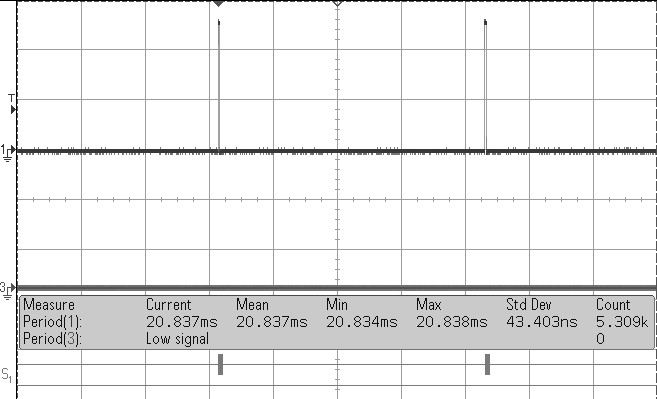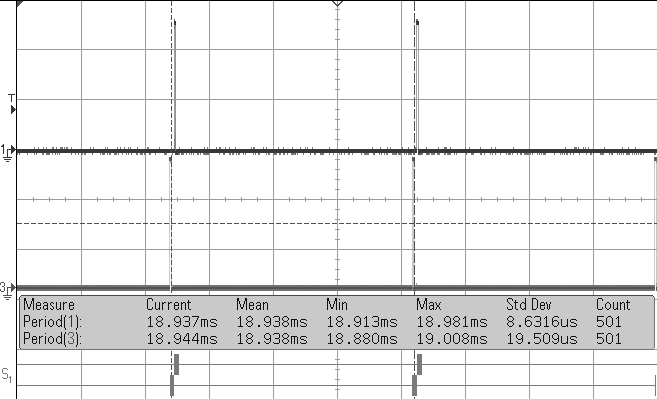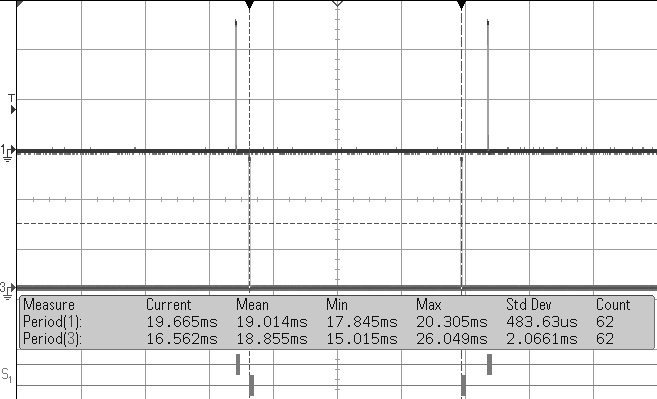Syncz Jitter
Jitter is a much discussed topic in the high end and professional audio world yet rarely is it quantified in terms of midi clock. Generally described jitter is the slight variation in arrival of a timing signal, all real signals have some amount of jitter in them. Below is a Syncz unit transmitting clock as the master without synchronising to an external device.

This value of 43ns standard deviation equates to less than a single sample at an audio rate of 192kHz, even beyond 6 sigma. Such low values are only possible with a device completely dedicated in design for producing a midi clock. Although it would be possible to reduce this jitter further with more advanced hardware, sub sample accuracy is more than adequate for audio work and would not cause any audible artefacts. For comparison, next is the Syncz unit synchronising to a well regarded hardware sequencer.

The 19us of jitter exhibited is nearly 3 orders of magnitude higher than Syncz alone but still on the order of a few audio samples, and less than a single bit period of the midi data. This is enough to produce timbal changes at the higher end of the audible spectrum. The Syncz device is able to filter this out and produce a synchronised clock with less than half the jitter. Finally is an example of a computer providing the master clock via a USB connected midi interface.

Academic research and the MIDI Manufacturers Association suggest that the accuracy of highly skilled musicians to be in the ms region, and that the 2ms of jitter present here would be audible rhythmically in certain circumstances. Although not eliminating it the Syncz device is able to reduce the jitter by more than 4, to below the rhythmically audible range. More severe filtering of the jitter has been investigated, but it was at the cost of ability to track tempo changes without audible delays.
Although with the Syncz device it is possible to reduce the jitter in midi clock to inaudible levels, this must be considered with the devices it is synchronising and their jitter characteristics which will often dominate the final result. Be wary of anyone claiming to have zero jitter in their signals, this is simply not possible unless we consider that time is quantised and the universe is synchronous (ask a physicist about that some time!). The recommendation has always been to synchronise software to an external hardware source, but with Syncz the gap is shrinking and software to software combinations are more stable than ever.
